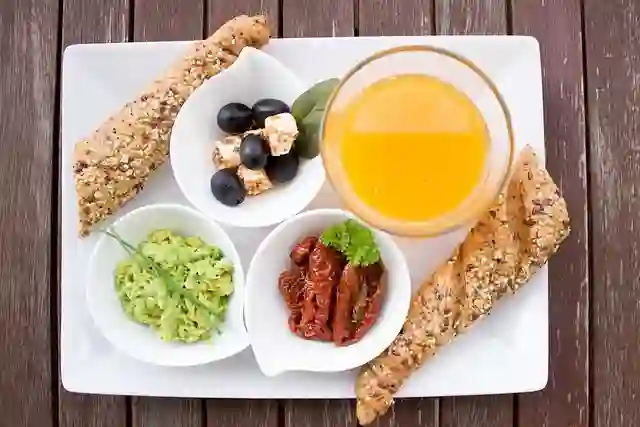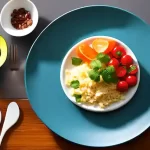Low-sodium Diet: Guide to Low-Sodium Eating
Are you looking to improve your heart health, manage your blood pressure, or reduce swelling? A low-sodium diet may be the solution for you. In this guide, we will explore the health benefits of low-sodium eating, provide a list of low-sodium foods, share delicious low-sodium recipes, and offer tips for meal planning and dining out. Let’s dive in!
Table of Contents
Health Benefits
A low-sodium diet can have numerous health benefits, including:
- Improving heart health
- Managing blood pressure
- Promoting kidney health
- Reducing fluid retention
- Preventing stroke
- Reducing hypertension
- Improving cardiovascular health
- Reducing swelling
- Helping with water balance and weight loss
- Reducing bloating and improving sleep
Heart Health
A low-sodium diet can reduce the risk of heart disease and other cardiovascular problems by lowering blood pressure and reducing the workload on the heart.
Blood Pressure
Excess sodium intake can cause high blood pressure, which can lead to serious health problems. A low-sodium diet can help manage blood pressure and prevent these problems.
Kidney Health
Reducing sodium intake can promote kidney health by reducing the strain on the kidneys and preventing kidney disease.
Fluid Retention
A low-sodium diet can reduce fluid retention, which can cause bloating, swelling, and weight gain.
Stroke Prevention
High blood pressure is a major risk factor for stroke. A low-sodium diet can help manage blood pressure and reduce the risk of stroke.
Hypertension
A low-sodium diet can help manage hypertension, or high blood pressure, which is a leading cause of heart disease, stroke, and kidney disease.
Cardiovascular Health
A low-sodium diet can improve cardiovascular health by reducing the risk of heart disease, stroke, and other problems.
Reduced Swelling
A low-sodium diet can reduce swelling and bloating, which can improve comfort and quality of life.
Water Balance
A low-sodium diet can help maintain water balance in the body, which can promote weight loss and reduce bloating.
Weight Loss
A low-sodium diet can promote weight loss by reducing fluid retention and improving overall health.
Reduced Bloating
A low-sodium diet can reduce bloating, which can improve comfort and self-esteem.
Improved Sleep
A low-sodium diet can improve sleep.
Low-Sodium Foods
Switching to a low-sodium diet does not mean sacrificing taste or variety. There are many delicious low-sodium foods to choose from, including:
- Fresh fruits and vegetables
- Whole grains
- Lean protein sources such as chicken, turkey, fish, and tofu
- Herbs and spices to add flavor without salt
- Low-sodium broth for soups and stews
- Canned vegetables without salt
- Unsalted nuts and seeds
- Low-sodium snacks such as popcorn and pretzels
- Low-sodium soups, sauces, and dressings
- Low-sodium cheese
- Low-sodium bread
Recipes
With these low-sodium foods, you can make a wide variety of delicious and healthy meals. Here are some ideas:
Low-Sodium Soup
Try this recipe for a hearty and flavorful low-sodium soup:
- 1 onion, chopped
- 2 carrots, chopped
- 2 celery stalks, chopped
- 1 can low-sodium diced tomatoes
- 6 cups low-sodium chicken or vegetable broth
- 1 cup lentils
- 1 teaspoon dried thyme
- 1 teaspoon dried rosemary
- 1 bay leaf
- 1/2 teaspoon black pepper
Saute the onion, carrots, and celery in a large pot until soft. Add the remaining ingredients and bring to a boil. Reduce heat and simmer for 30 minutes or until the lentils are tender.
Low-Sodium Salad
Here is a simple and refreshing low-sodium salad:
- 2 cups mixed greens
- 1/2 cup cherry tomatoes, halved
- 1/4 cup sliced cucumbers
- 1/4 cup sliced radishes
- 2 tablespoons balsamic vinegar
- 1 tablespoon olive oil
Toss the greens, tomatoes, cucumbers, and radishes in a bowl. Mix the balsamic vinegar and olive oil and drizzle over the salad.
Low-Sodium Casserole
This low-sodium casserole is a crowd-pleaser:
- 2 cups cooked brown rice
- 1 can low-sodium black beans, drained and rinsed
- 1 can low-sodium diced tomatoes
- 1 cup frozen corn
- 1/2 cup low-sodium salsa
- 1/2 teaspoon chili powder
- 1/2 teaspoon cumin
- 1/2 cup shredded low-sodium cheddar cheese
Mix the rice, black beans, tomatoes, corn, salsa, chili powder, and cumin in a large bowl. Transfer to a baking dish and sprinkle with cheese. Bake at 350 degrees for 20-25 minutes or until the cheese is melted and bubbly.
Low-Sodium Chicken
This easy low-sodium chicken recipe is perfect for a weeknight dinner:
- 4 boneless, skinless chicken breasts
- 1 tablespoon olive oil
- 1/4 cup low-sodium chicken broth
- 2 cloves garlic, minced
- 1 teaspoon dried thyme
- 1/2 teaspoon black pepper
Heat the olive oil in a large skillet over medium heat. Add the chicken and cook for 6-7 minutes on each side or until golden brown. Add the remaining ingredients and simmer for 10-15 minutes or until the chicken is cooked through.
Meal Planning
Planning meals in advance can make it easier to stick to a low-sodium diet. Here are some tips:
Weekly Meal Plan
Plan out your meals for the week and make a shopping list to ensure you have everything you need.
Low-Sodium Meal Prep
Prepare meals in advance and store them in individual containers for easy reheating and portion control.
Meal Planning Tips
Use herbs and spices to add flavor to meals, avoid processed and pre-packaged foods, and read food labels carefully to identify high-sodium items.
Low-Sodium Menu
Create a menu of low-sodium meals to make meal planning easier.
Eating Out on a Low-Sodium Diet
Choose grilled or baked dishes, ask for dressings and sauces on the side, and avoid salty sides like fries and chips when dining out.
Dining at Fast Food Restaurants on a Low-Sodium Diet
Opt for grilled chicken sandwiches, salads with low-sodium dressings, and fruit cups instead of high-sodium sides.
Low-Sodium Travel Tips
Bring low-sodium snacks and meals on long trips, research low-sodium options at your destination, and ask for low-sodium meals on flights.







